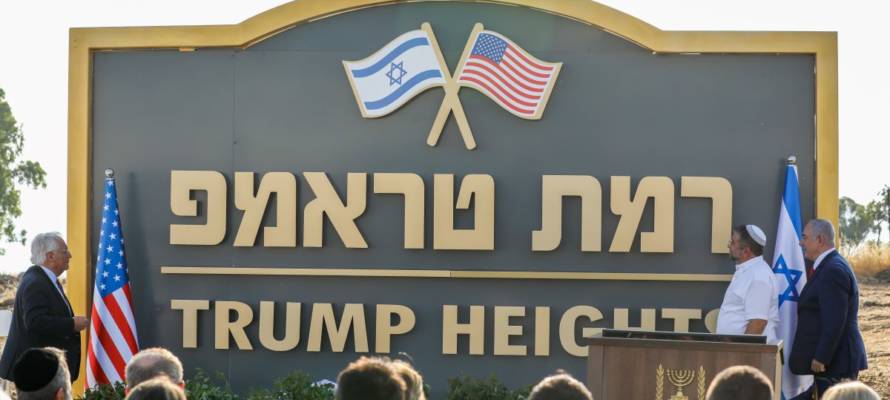“The Golan Heights are Israeli; this is self-evident. Israeli law has been applied to them since 1981 and they are beyond all debate,” Prime Minister Bennett stated.
By Pesach Benson, United With Israel
Israel has announced a historic development plan for the Golan Heights on Sunday.
The weekly Sunday cabinet meeting, convened especially at Kibbutz Mevo Hama in the North, is expected to green-light an NIS 1 billion ($317 million) initiative to double the Golan’s population, establish new communities, improve infrastructure and create jobs.
Prime Minister Naftali Bennett, who unveiled his initiative in October, has described boosting the Golan’s population from 53,000 to 100,000 by 2025 as “a strategic goal.”
“Zionism, from its earliest days, has been characterized by the points in time in which the leadership ‘seizes the moment,’ identifies a window that has been opened, a political opportunity or change of trend, and takes the opportunity to advance the interests of the State of Israel,” Bennett said in his opening remarks at the cabinet meeting.
“First, it must be said, the Golan Heights are Israeli; this is self-evident. Israeli law has been applied to them since 1981 and they are beyond all debate.
Bennett was forced to leave the meeting early and enter quarantine after learning that his 14-year-old daughter, Michal, had tested positive for COVID. He was staying in isolation pending the results of a PCR test.
The government plan will allocate NIS 576 million ($183 million) for new housing over a five-year period. Katzrin, with a population of around 7,200 people, is the Golan’s largest community and would be earmarked for 3,300 new homes. Two new communities named Asif and Matar will be launched with 2,000 homes each.
An additional 4,000 homes will be built in other Golan communities. The Golan is home to 27,000 Jews, 24,000 Druze and 2,000 Alawites.
The initiative also aims to create 2,000 new jobs, especially in agricultural technology, and improve infrastructure and transportation.
Israel captured the Golan Heights from Syria during the Six-Day War in June 1967 after Syrian forces shelled Israeli communities in the Galilee. After the war, the Israeli cabinet offered to return the Golan and other territories it captured in exchange for peace. But the Arab world unanimously refused Israel’s offer of land for peace.
The Arab League met in Khartoum, Sudan, in September 1967 to formulate a response, which became known as the “Three Nos,” namely:
1. No peace with Israel.
2. No recognition of Israel.
3. No negotiations with Israel.
Jewish history in the Golan dates back to Biblical times when it was referred to as the Bashan. The ancient village of Gamla is known as the Masada of the North. Archaeologists have discovered dozens of synagogues and mikvaot (ritual baths) testifying to Jewish life in the region.
Israel annexed the Golan Heights in 1981, and in 2019, U.S. President Donald Trump recognized the Golan as part of Israel.
Golan landmarks include Mt. Hermon, the Banias spring at the foot of the mountain, the Kursi Archaeological Park, the Gamla Nature Reserve, Nimrod’s Fortress, and the Mt. Beintal lookout point.
